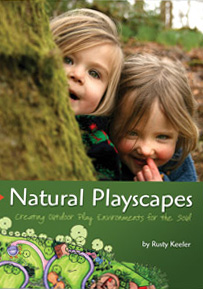ExchangeEveryDay Past Issues
 << Previous Issue
| View Past Issues | | Next Issue >>
<< Previous Issue
| View Past Issues | | Next Issue >> -Ruth Wilson, Environmental Educator and Writer
"Just as in other studies, the Tennessee experiment found that some teachers were able to help students learn vastly more than other teachers. And just as in other studies, the effect largely disappeared by junior high, based on test scores. Yet when Mr. Chetty and his colleagues took another look at the students in adulthood, they discovered that the legacy of kindergarten had re-emerged. Students who had learned much more in kindergarten were more likely to go to college than students with otherwise similar backgrounds. Students who learned more were also less likely to become single parents. As adults, they were more likely to be saving for retirement. Perhaps most striking, they were earning more. All else equal, they were making about an extra $100 a year at age 27 for every percentile they had moved up the test-score distribution over the course of kindergarten. A student who went from average to the 60th percentile — a typical jump for a 5-year-old with a good teacher — could expect to make about $1,000 more a year at age 27 than a student who remained at the average. Over time, the effect seems to grow, too...
"The crucial problem the study had to solve was the old causation-correlation problem. Are children who do well on kindergarten tests destined to do better in life, based on who they are? Or are their teacher and classmates changing them?....
"Class size — which was the impetus of Project Star — evidently played some role. Classes with 13 to 17 students did better than classes with 22 to 25. Peers also seem to matter. In classes with a somewhat higher average socioeconomic status, all the students tended to do a little better. But neither of these factors came close to explaining the variation in class performance. So another cause seemed to be the explanation: teachers. Some are highly effective. Some are not. And the differences can affect students for years to come."
|
Natural Playscapes |
|
Natural Playscapes: Creating Outdoor Play Environments for the Soul |
ExchangeEveryDay
Delivered five days a week containing news, success stories, solutions, trend reports, and much more.
What is ExchangeEveryDay?
ExchangeEveryDay is the official electronic newsletter for Exchange Press. It is delivered five days a week containing news stories, success stories, solutions, trend reports, and much more.
Large 15 Gal Commercial Container. Hands-Free “Step & Drop” Disposal. Clean Hygienic Enclosed System. Preferred by University Child Care.
• Online play-based assessment & curriculum for infants, toddlers, and preschoolers.
• Variety — choose from 3,200 activities
• Aligned to all state early learning standards
• Easy to use with accountability
• FREE TRIAL




Comments (2)
Displaying All 2 CommentsPittston, PA, United States
And when do we study the success rates in Kindergarten based on the quality of the child care the child received in the 0-3 years? As we all know we in child care, we often up the success rates in Kindergarten by giving the child the necessary foundation. I do applaud the Kindregarten teacher that builds on this foundation!
Shishu Vikash Kendra
Kolkata, West Bengal, India
In India there are many kindergarten schools . The schools are of different
qualities . Money is paid according to their quality . It is better to choose
the appropriate schools .
Post a Comment